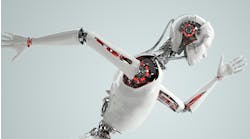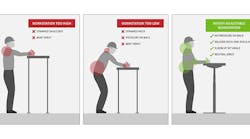People nowadays are becoming more aware of the necessity of incorporating ergonomics into their everyday lives. This is no more apparent than in the workplace. While many companies are now incorporating height adjustable desks into the traditional office space, they also need to consider ergonomics in their factories. There are a multitude of reasons why ergonomics should be implemented in the production line, leading to benefits for both the employer and the employee.
In a typical production line, there are applications such as industrial workstations, conveyer belts, packaging machines, and more. While some of these are operated by machinery or robotic solutions, there are still areas in which humans need to take the reins. In these instances, it is essential that their work area is ergonomically designed to cut back on potential risk factors. For example, factory work includes a lot of repetitiveness. If an employee is in an unnatural position or putting any kind of strain on their body while performing this work, then the damages can really add up. They could even result in a repetitive motion disorder, or RMD, such as carpal tunnel syndrome, tendonitis, or arthritis.
Repetitive motion disorders are responsible for a lot of lost-time injuries in the workforce, on top of the pain and discomfort that they bring to the employee. This further results in lower productivity and higher worker compensation premiums for the employer. The risk of developing an RMD can be decreased by designing workstations with ergonomics in mind. All workstations should be height adjustable, so that they can accommodate workers of all heights. In addition, different applications in the factory can be converted into adjustable machines through the use of electric linear actuation, such as lifting columns and actuators. This is important, because multiple studies have been conducted that show that jobs that require sitting or standing all day are linked to a higher risk of heart disease. Using a height adjustable station can help mitigate this risk for production workers.
The manufacturing industry in the U.S. is still going strong, and in a lot of cases, the workforce is getting older. This being the case, it is essential that factories operate from an ergonomics standpoint. When a company takes the time and makes the initial investment in their employees’ health and productivity, it will surely pay off in the long run.











